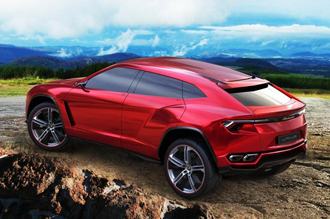China SUV Sales Surge in Sluggish Auto Market
China’s SUV sales jumped 18.05% in the first quarter while sales of its auto industry as a whole slipped 3.4%, according to data from China Association of Automobile Manufacturers (CAAM).
During the first quarter 447,000 SUVs were produced and 441,600 were sold, representing increases respectively of 22.23% and 18.05%.
China’s auto industry as a whole produced 4,784,200 units and sold 4,792,700 units, representing year-on-year decreases of 1.8% and 3.4%, respectively.
The growing popularity of gas-guzzling SUVs reflects the emergence of an upper-middle class that enjoys spacious, comfortable vehicles suited for weekend outings away from the cities. At the same time the additional costs associated with driving an SUV also add to the status factor which remains very important to newly affluent consumers.
These attractions of SUVs have the world’s automakers competing to become the leader in this burgeoning market.
This year’s Auto China car show provided a platform for carmakers to give center stage to their SUV offerings for the China market, including the Ford Kuga, Buick Encore, Acura RDX, Infiniti JX35, BMW M6 and the Volvo V60. Not to be outdone, China’s homegrown SUVs were also on display, including the GAC Trumpchi GS5, Changan CS35, Brilliance V5, Geely GX7, and Dongfeng Fengxing Jingyi.
Even brands like Bentley, Lamborghini, and Maserati known for only their ultra-luxurious and exotic sedans and sports cars showed SUVs at Auto China, recognizing the market’s only fast-growth niche.
Their enthusiasm is fueled by the numbers. In 2011 China imported 567,000 SUVs, according to CAAM. Combined with domestic SUV sales of 1,593,700 units, the nation’s SUV market was 2.17 units, a 20% jump over 2010. Even now the surge in SUV sales has been a big enough surprise that many showrooms can’t keep certain models in stock, leading to buyers paying premiums over the sticker price.
“The overall proportion of SUV in China is not exceptional,” said CAAM vice president Dong Yang. “Maybe this is a development phase. When people bought their first car, they all chose a sedan. Now some people are buying their second car or replacing the first one, SUV become a choice.”
As more urban families move into that economic tier that can take weekend driving trips, they clamor for precisely what SUVs offer: multi-purpose practicability; their majestic size and feel, and the fashion statement it makes about the owner’s lifestyle. They also give affluent consumers another way to display their sense of personal style.
SUVs are now on track to catch and pass the semi-luxury segment and even economical compacts. It seems only a matter of time before China’s SUV segment catches up to that of Europe and the US where it make sup 15% and 25% or their respective auto markets. If China continues to pace the world in economic growth, it may even hit 28%, the percentage of the US market in 2009 before the permanently soaring price of gasoline forced consumers to scale down their driving habits.

The Lamborghini Urus crossover, which debuted at the 2012 Auto China in Beijing, boasts a 5.2 liter V10 engine pumping out 592 horsepowers.

